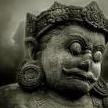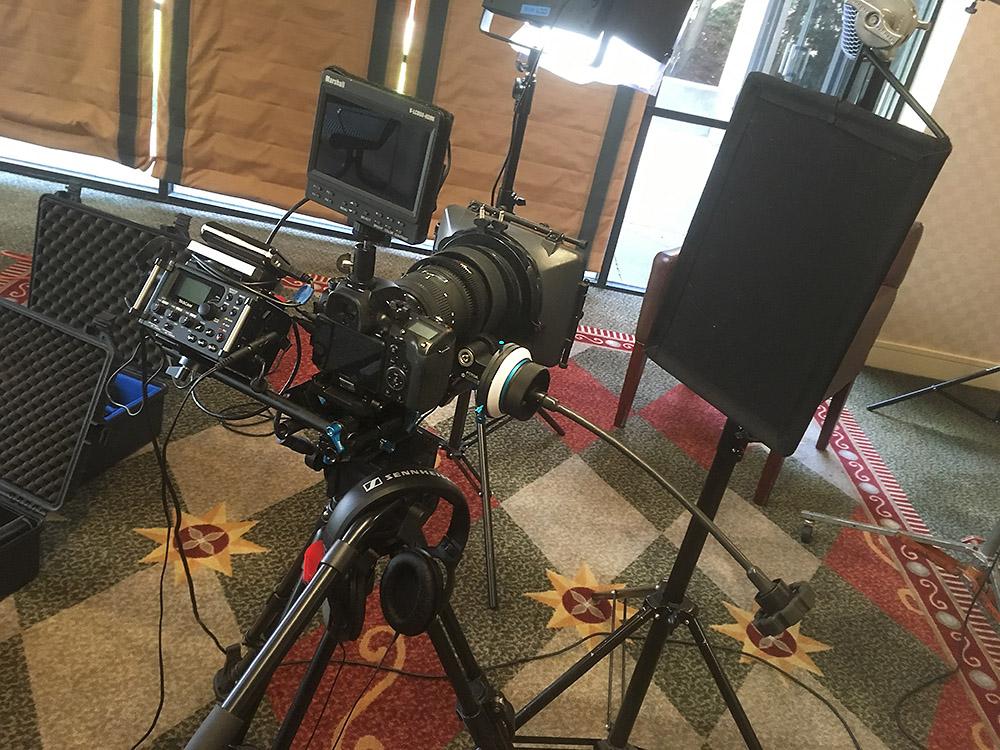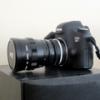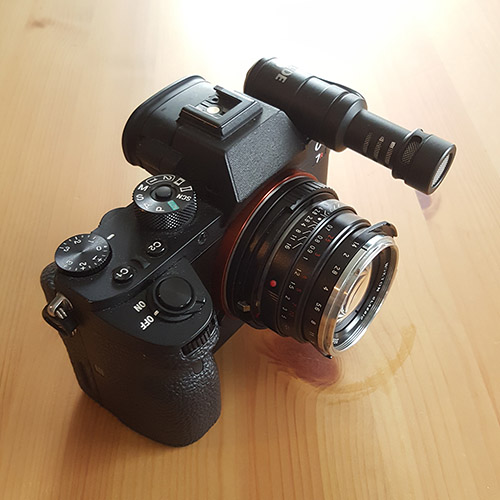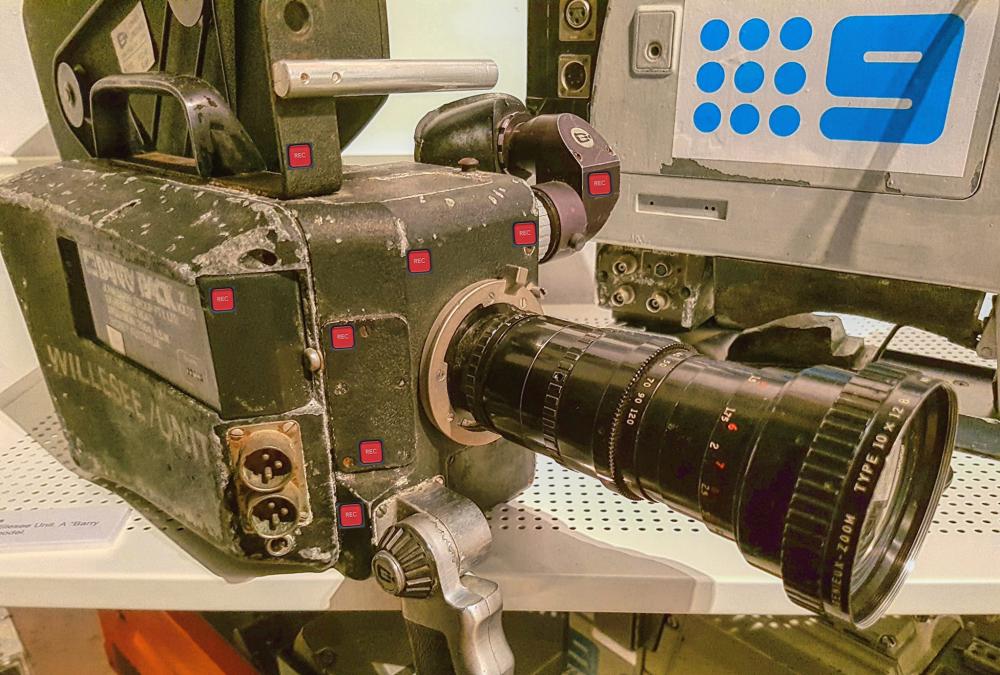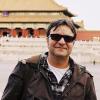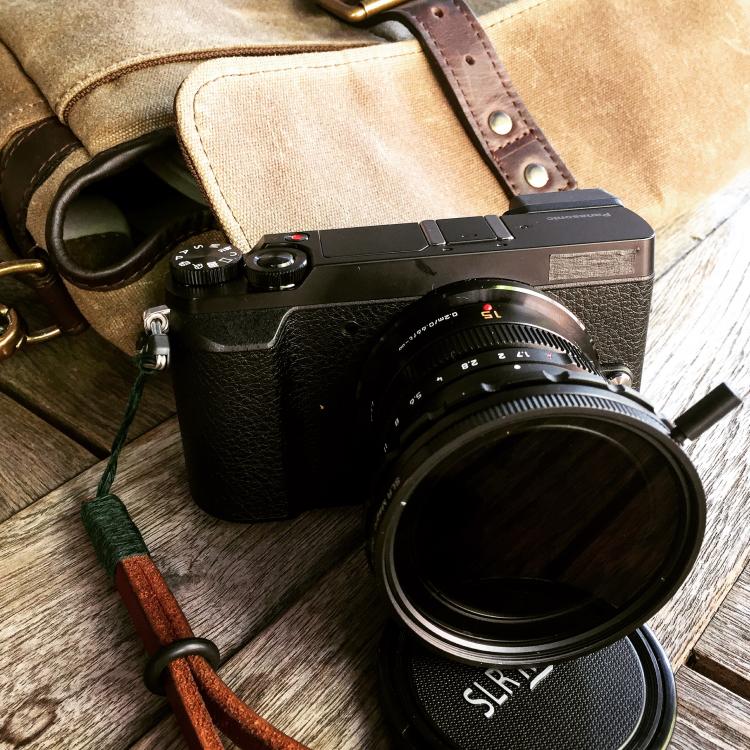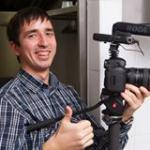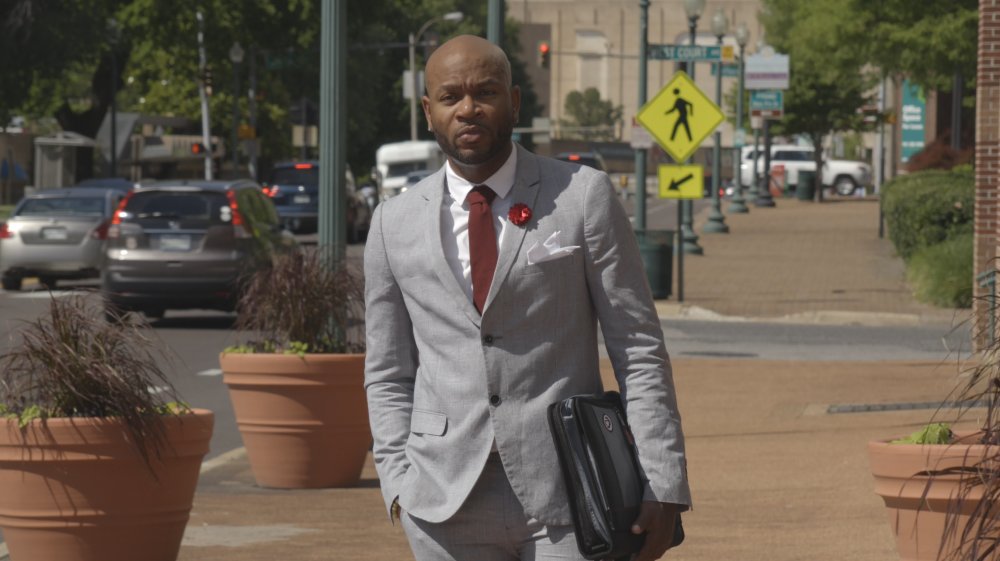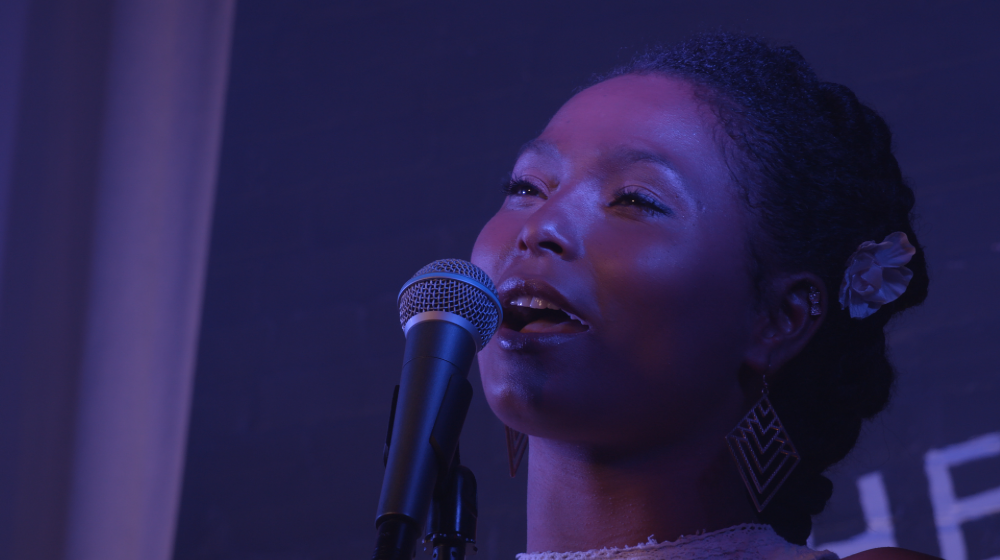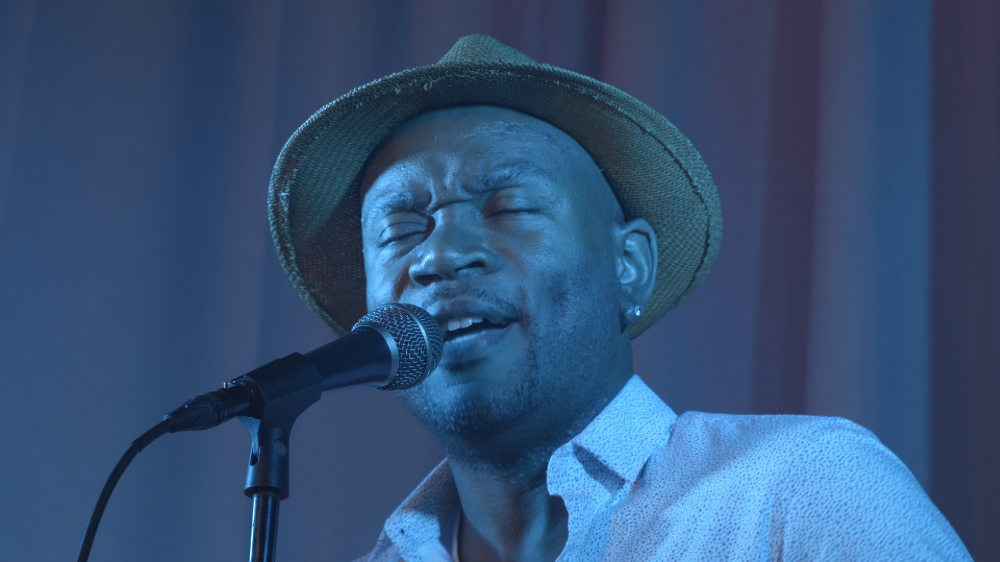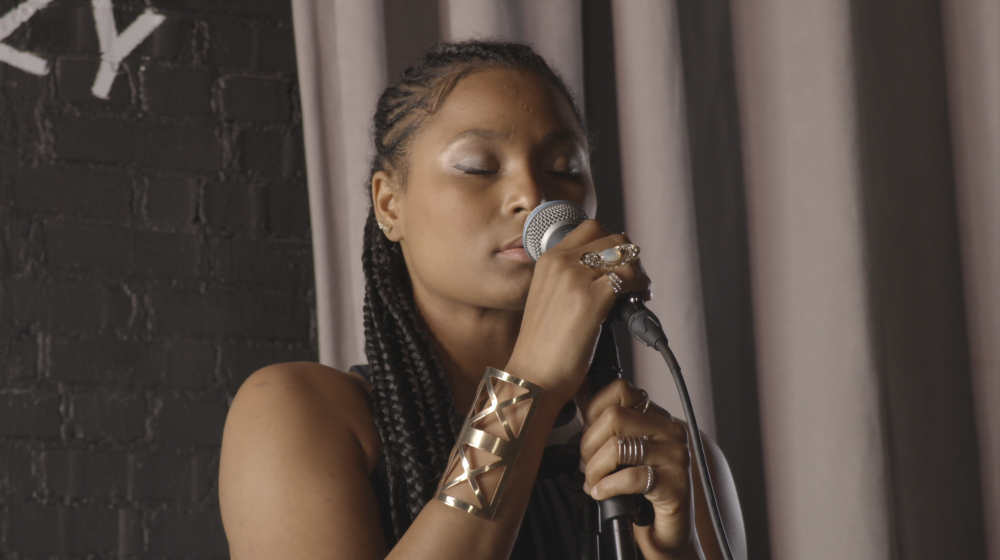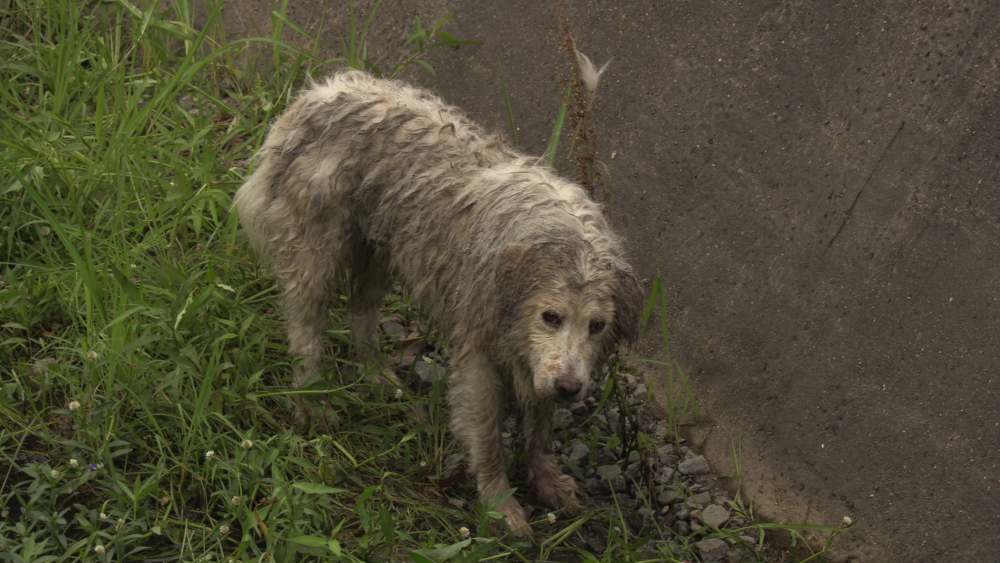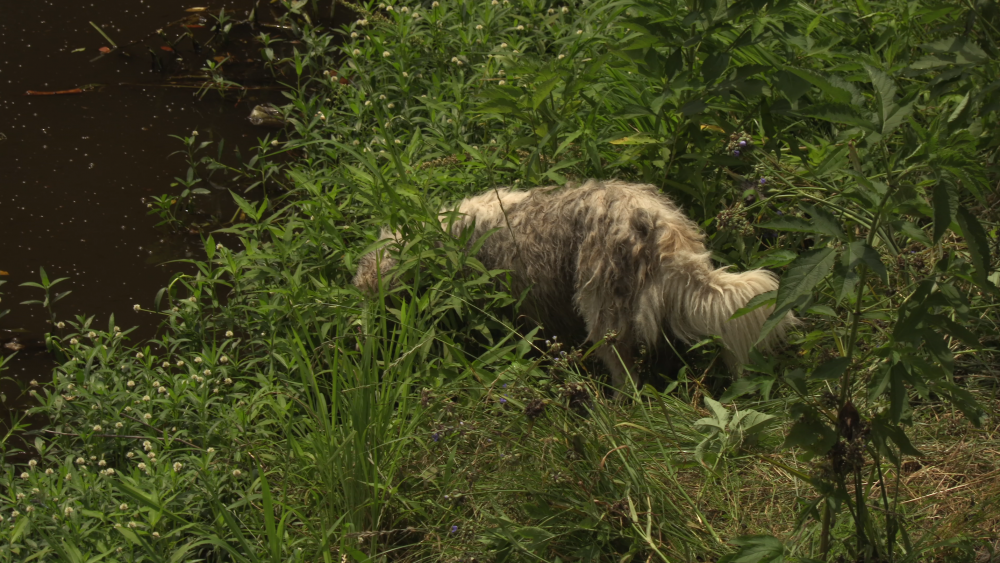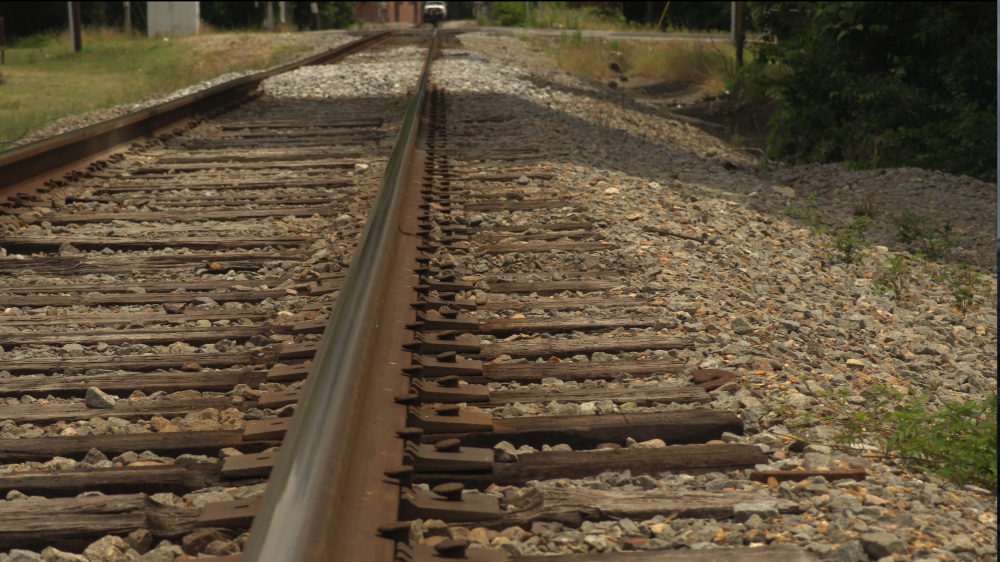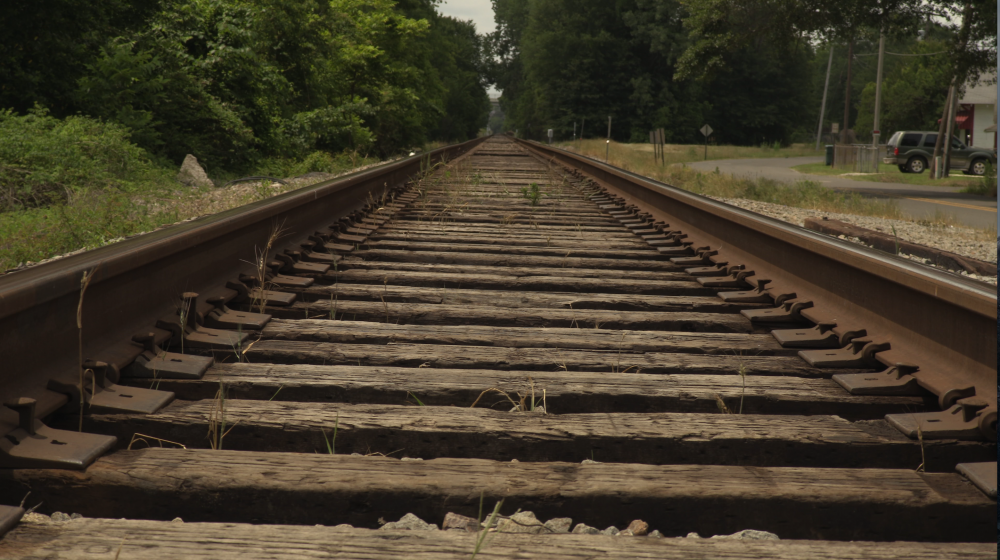Leaderboard
Popular Content
Showing content with the highest reputation on 09/24/2016 in all areas
-
I do a ton of corporate interviews, musing about some doc projects if I get some free time... The #1, by-god awesome, holy-cow thing for me as an interview shooter and editor: freaking 4K. If you have a feel for narrative, human nature, drama, etc, you can guide and cut a great interview. But reframing has changed the game for me. You can hide cuts, and tighten up the shot for the most dramatic or impactful statements. When I come in tight, I can do subtle camera moves/pans which really just "work" subconsciously. I can shoot a little wider than usual for lower thirds or graphics and still have plenty of pixels for a wide range of shot changes, without moving the camera. That's my #1. I use the NX1 for all interviews now (the 4k footage is pretty astounding), with a Nikkor 28-70 2.8 zoom generally - that zoom looks fab and it allows me to adjust framing quickly, like I setup with a stand-in and then the subject is 7' tall. (#1-a? A morphing plugin for your NLE. When they work, they're lifesavers - get every f*cking UMM and pause and stutter OUT of your edit!!)(Unless those express the personality - for corporate stuff they're goners). Other MASSIVE thing for interviews - if it's not "to the camera" (which I generally dislike) - who is the subject talking to? If it's me, I'm in a chair with a monitor on my lap, but I HATE looking down to check focus - people instantly feel like you've got something more important on your mind. So I have to go deeper with the DOF and if the subject is really active or excited - you'll lose focus. So I try to get someone to be an eye line. I QUIETLY whisper questions to that person - if you're behind the camera and you ask the question, even if you say "tell her...", their eyes will shift back and forth and it looks shifty. I'd much rather be riding focus behind the camera. With a follow focus and a 12" whip, so no jitters. I only wear headphones for initial setup and first roll with the subject, they are too "distancing" for me, unless I'm not the interviewer. IF THE INTERVIEWER IS NOT IN THE EDIT - make sure they answer IN CONTEXT so the question is not needed. Most people understand this, and understand if you stop them and say "context, please" or lead them - "I'm sorry, could you start that with 'the reason I love what I do'..." #3 major thing for a great interview - a third person with an eye for detail and grooming - most any lady or your gay buddy will do - (not trying to be sexist, just my hard experience) - even the receptionist - to keep an eye on hair, collars, lint, wrinkles, etc. There's too damn much to be focused on (for my tiny brain anyway) - most ladies like to be asked to be the grooming police and watch for that lock of hair that pops up halfway through, to watch for makeup issues on female subjects that guys don't even SEE. Have them look through the monitor for issues like shining skin, too. (I KNOW this sounds sexist and generalized, but I've found it to be true!!! If a lady looks decent in her clothes, she'll see what needs fixing.) So for a doc, I'd think about your assistant - someone that can watch for those details, help setup and pack and carry, and either be an eyeline or can babysit focus. I also use the NX for steadicam b-roll, I just stick the cheap little 16-50 OIS kit lens on it, very small and light on a Came steadicam, and I use the same QR on everything so I can be on the steadicam in seconds. From there, b-roll, establishing shots, whatever you need... lenses, tripod, jib, sliders, shoulder mount, etc. Have an ND solution if you'll be moving in and outdoors. Good audio is a must, the DR60 is a great piece of gear, and the camera-out with its own level control means you can use it as a preamp and not need to synch (I use the NX1 and when gain is staged properly, no difference between the DR card or the camera). But you have the recorder files as a safety if you get an over (and the DR records a 2nd track at -6DB which can save your ass). Get some closed-back headphones (even cheap ones). You need a great mic, or at least a good one - Oktava, AT 4053, or at the least a Rode, but get a hyper, not a shotgun. For about $200 you can get one of the OST lav mics AND the XLR barrel converter, which converts phantom power to mic power. So you can use a lav and not mess with wireless and be all-XLR, no monkey-business 1/8 crap in the chain. There's a small OST that hides great in a tie knot. LIGHTING - for a big window office where you want to hold the exterior, you generally need a 575 or 1.2k HMI par. And with many angles, your diffusion frame will reflect in the window, so you need strategies for that. Often a polarizer will knock down lesser reflections. Or you can ND the whole window if you have all day. I keep a 575 in the truck, but I have a "one-rock-n-roller-cart" setup to make one trip in for most gigs. I TRY to use a quad biax - they're usually under $200, and I clip diffusion across the barn doors, instant softbox that's the right size for faces, small and easy to move, no cold-start issues, etc. I also bring an Aputure 672 LED for rim/hair, or background (probably will get another sometime)... usually a small 300 fresnel if I want warm BG light... I also have a 400 HID setup that works with all the photoflex softboxes, but that's a DIY grow light thing (it kicks ass and looks legit, about 1200 watts of nice daylight). I also have a 2" daylight fresnel with a 150 HID globe and ballast, again DIY but looks like actual gear, about 500 watt equivalent) handy little problem solver. And a bunch of CTB and CTO gels cut to size and ready in a big ziplock. Usually doesn't take many lights to get a nice looking interview setup. In a pinch I can be setup and ready to roll in 20 minutes, though that's kinda stressy! For overhead mic, I use a steel roller stand - it's heavy enough to not need sandbags but easy to tweak the position. Those are pricey, $180 or so, but worth it. I don't bring c-stands to most interview gigs, too hard to pack, too heavy. Use good quality folding stands though, the Matthews steel kit stands are good. Find a good solution to pack all your stands in. I generally bring the steel roller w/ arm - decent stands for key, LED, fresnel - I bring a couple black flags (18x24) for spill or if the hair light is hitting the lens as a flag; a cookie and grip stuff; a couple extra boom arms and heads. Usually 5-7 stands in a bag. An 18" and 22" popup reflector/diffusor, gaff tape, spring clamps, and A LINT ROLLER!!! There are LEDs that would make a suitable key (the Aperture doesn't have the kick except for very dark setups), but they're a grand and up, the biax quad is still a trouper for me. All of that on one cart - I use two motorcycle tie-down ratchets to hold it on the cart. That's my business interview setup, but I'd likely use the same for a doc interview. Last week, basic setup:8 points
-

Rectilux Core DNA - non-rotating single-focus attachment for anamorphic lenses
Ian Edward Weir and one other reacted to Hans Punk for a topic
Quite normal...at least from my experience with DNA or any diopter for that matter. Oval bokeh stretch is often increased. It can be a good trade off when closing down on taking lens to retain sharpness on many scope lenses, since the apparent oval defocus is then reduced to a more 'regular' looking stretch ratio, akin to shooting with the taking lens with an open aperture when no diopter is used. Since most modern cameras perform very well at higher iso's...the effective loss of light by stopping down is far less of an issue. For example, Ive found f4 - f5.6 on Core DNA gives a comparable oval defocus stretch value to having the taking lens set at f2 - 2.8 when no diopter is up front. From most single-element diopters I've tried - I'd say f4 is as wide as you'd want to be to help avoid funky glows and highlight ghosting when used in front of most scope lenses....there is still plenty of defocus stretch, due to the diopter 'effect'. My advice to anyone using any of the vari-diopter solutions is to stop down 2-3 stops more than you would normally...so as to give the single-element optics a fighting chance at resolving sharpness, without ugly highlight edge artefacts...there will still be plenty of shallow depth of field for those who crave it.2 points -

For those in love with the FULL FRAME look which system gets closest in 4K?
TheRenaissanceMan and one other reacted to fuzzynormal for a topic
Yeah, but there's definitely a market for it. More people have looked at dpreview A7RII studio charts than all the movies I've ever made. Now, I'd like to say my movies have probably made more people cry than dpreview studio charts, but I suspect that's somehow wrong too.2 points -
So I got my Zhiyun Crane in the mail last week right before a shoot out West and I decided to leave my other stabilizer at home. Delivery was extremely quick with the priority shipping and the customer service on their Facebook site (messaged them) was fantastic. I had some small problems with the stabilizer, but all in all it is quite a step up over a steady cam. This is my first gimbal and I have to admit I wasn't really trying to keep it steady that much as I should have. It seems like it's magic (which it pretty much is), but you definitely still need to practice to make it perfect. Let me know if you have any questions1 point
-
1 point
-
There is a working Gh5 sample at Photokina thats for sure...1 point
-
Though I bought the GX80 1-2 months back, I didn't really get to use it until yesterday cause I was travelling. Quite a seriously impressive little camera. I wish they didn't act so stupid by not putting a ($5) mic socket and not having Cineline V and D. The price difference between this and the G80 isn't really big considering the weather sealing, the magnesium front, slightly quieter shutter, 3 times faster buffer and the kit lens. If all those are considered the GX80 may be overpriced. And if they incorporate the 8-bit 4-2-2 internal recording, it would be stupid. The kit lens is actually pretty sharp. Maybe as sharp as many of the primes. Though having a faster prime is a necessity. I wish there were a lot more choices for fast glass (f1.2 and faster). I love night street video and photography. A lot of cities really come alive at night. Panasonic should incorporate the Cinlike profiles, the Saving Mode and the Focus Bracketing in the firmware update, and not merely focus bracketing. I found the grip a little ackward and uncomfortable at first. It takes a while getting used to. Though, overall, I actually like the range-finder kind of body and semi-articulating screen. They make the camera less conspicuous. I could put the camera on a wall right next to a cop, tilting the screen upwards, and he wouldn't know he's part of a guerilla shoot.1 point
-

For those in love with the FULL FRAME look which system gets closest in 4K?
Geoff CB reacted to Don Kotlos for a topic
Same here. The main advantage of FF is the small DoF, in which case aliasing artifacts are less and next to invisible. Also the A7rii FF mode has much less rolling shutter as well so that is another reason that is the preferred mode for handheld use. Then crop+clear zoom just gives you all the range that you need in one tiny package (in this case 35mm gives you 35-105):1 point -
purchase a subscription1 point
-
The 4K Fuji X-T2 is here
Marco Tecno reacted to The Chris for a topic
That looks nice, but a number of cameras can do the same thing sitting on a tripod with the subject perfectly framed, not the most challenging scenario. From watching The Camera Store (I think that was the one) review, it struggles in walk-and-talk scenarios, where the subject is moving and the camera op is tracking them.1 point -
M Carter's post is great. I've found 4k to be a godsend when shooting interviews as well. Before 4k, I would punch in/out between questions, now its just one less thing to fuss with while shooting. If I can, I use a B cam for cutaways - but as mentioned 4k is invaluable for reframing or just creating movement. The a6000 has a hotshoe, Sony makes two XLR adapters that work with the MIS shoe.1 point
-
Do your research before buying an audio device. Make sure that the MIC you'll buy will go well with the recorder. I shot several documentaries in the past years with the Zoom H4N + Shure lav mic + Rode NTG-2. Both mics have different output levels, the H4N has a really rubbish built in preamp, so it did not work well with the RODE NTG-2. It was a pain in the ass to adjust those levels in the post production (one was around -6db, the other at -40 db), there is a sw update availabe for adjusting the channel levels separately, but that won't solve the shitty preamp issue. I switched to TASCAM DR-40 and everything works flawlessly. To sum it up: make sure your recorder has a good preamp, personally I can recommend the tascam.1 point
-

Canon XC10 versus Sony RX10 III. The Canon is underrated!
tomsemiterrific reacted to Garug for a topic
Some more videos with the XC10 on LeViteZer 360 gimbal For more see http://www.levitezer.com/blog/1 point -

Canon XC10 4K camcorder
mercer reacted to Lintelfilm for a topic
I have the Sigma APS-C Art zooms (18-35mm and 50-100mm) which I use almost exclusively with my C100MK2. I also use the Canon 10-18mm STM a bit and like it (I call it my "Revenant lens" as the AF and IS, used at 14mm with the C100 top handle, allows very similar shooting setup (albeit not quite so high-end!) to Lubezki's I've recently bought the other STM zooms (18-135 and 55-250) as backup for when the Sigmas aren't practical. I'm not sure how useful they are to me though. If I want ease of use I have my XC10 and don't yet see much that the STM's offer over it. But because they're so cheap, light and small it seemed worth having them on standby. I've also just ordered a 50mm 1.8 STM for when I don't want to carry the 50-100mm. The Sigma's are just fantastic. The 18-35 is a known quantity - just beautiful. The 50-100mm Art I love also - the image quality is IMO out of this world and cuts perfectly with the 18-35. The two together make a full set of cine primes that work great with DPAF. They are both quite noisy with AF though (another reason I got the STM's). And the 50-100 is pretty huge, so not for everyone. With the C100 I find it fine but wouldn't like it for video on a hybrid. I wrote a review of it for Dan Chung over on Newsshooter.com if you're interested in hearing more (including thoughts on using it with the C100MK2): http://www.newsshooter.com/2016/05/05/guest-post-first-impressions-of-the-sigma-50-100mm-f1-8-art-lens-by-matt-james-smith/ Here's the video I made to go with it: and this one (a personal piece for a friend with a new baby) is the same setup: Other lenses on my list of long term purchases: Canon 35mm f2 IS Canon 70-200mm f2.8 II IS Canon 17-55mm f2.8 IS Tokina 11-20mm f2.8 However I'd honestly be happy shooting with just the two Sigma's for the rest of my days (only if they added IS and silent AF would I change them).1 point -

Canon XC10 4K camcorder
Kubrickian reacted to Lintelfilm for a topic
Great stuff. I really like the stuff you've done with the XC10 as well.1 point -
i have had in hand the em1 II yesterday on Photokina with the 12-100.stabilization is impressiv even on 100 mm.the AF with face detection works strange with very harsh transition1 point
-
While most people associate the C500 with famous American DPs like Hurlbut or Jeff Cronenweth, we should not forget to mention the C500 work shot by CML founder Geoff Boyle, BSC: It's impressive to read that this was all shot with EF glass. Here are some of Boyle's lens tests using the C500: http://www.cinematography.net/CML-CMIR-Lens-Tests.html His over and under exposure results as part of the 2015 CML camera tests are also available: http://www.cinematography.net/edited-pages/C500-uwe-2015.html There is a wealth of useful info there on the camera, especially with regard to the differences in overexposure when dealing with tungsten vs. daylight. Unfortunately, the 5,000 ISO test of the two low-light champs, the C500 and the Varicam, is no longer available through the online link.1 point
-

Dont forget Olympus (em1ii)
The Chris reacted to fuzzynormal for a topic
3 second equals 180 frames. 180 frames is 7.5 seconds when conformed to 24fps, so, hey, useful for some stuff if you want to do a slow-mo montage or some such. Personally, I wouldn't be basing an entire purchase around RAW burst mode, just saying it would be fun to have and I could see utilizing it productively if it was there.1 point -
I finally had the chance to upload the C-Log onto a camera. Unfortunately it's the eos-m10... Probably the lowest level Canon camera, but it's the only one I have access to at the moment. I think the C-Log definitely helps with the shadows and I am really enjoying it so far. I've also been testing some of your other profiles. I love the look you have shown with Chrome, but with my footage it is SUPER saturated, whereas your samples look muted... Do you think it may be camera specific? Also Cinema 4 is very saturated as well, when I cut the saturation in half, it more closely resembles your description. But with the saturation knocked down a touch or two, it kinda resembles the Wide DR mode in Canon's C cameras. Nice job, it's really cool to breathe some life into these cheap old tech cameras.1 point
-
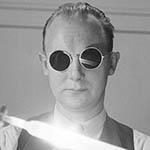
Canon XC10 4K camcorder
Lintelfilm reacted to Kubrickian for a topic
I've never tried vintage lenses on my C100 MII but would like to. Right now I use the tokina 11-16, sigma 18-35, canon L zooms, canon 35 / 50 / 85 primes. Here's a piece I shot on the 18-35:1 point -
Samsung NX Speed Booster
Pavel Mašek reacted to ttbek for a topic
Luca: Sorry, very busy week at work, there's a competition we're participating in so we've been trying to meet those deadlines. I would look now but I don't have have the software for it on the WIndows side of this computer, promise I'll look before I sleep tonight though. carlic: I'm going to try, that's not a question of funding, merely of my free time, my colleague's, and if we have enough info to pull it off. We finally have the parts to get started but he is sick so I'm not sure if we will take a look tomorrow or put it off until next weekend. If all people need is aperture control, that is a much easier proposition than the full deal and I believe implementation is available online as code for something like an Arduino. I have no intent of doing any manufacturing, if I am successful I will post the code, a full component list, recommended tools, etc... so that others can easily do it themselves. I intend to modify a dumb Canon to NX adapter using contacts from the AF supporting macro extension tubes for both NX and Canon, so a screwdriver, small handsaw, some kind of hotglue or epoxy and those 3 cheap adapters should be all that is needed mechanically. The whole thing should be doable with < 100 USD even if you don't own any of the tools at the start. Miniaturizing components or packing it all neatly into a custom adapter body is a different story, maybe Luca would be interested in that portion if we reach that point. Don't get your hopes too high though, we haven't even really started and it may be quite difficult, we'll see. It's also possible that we face lens by lens challenges, in which case it's not exactly feasible for us to go through every lens on or own, so we would post what lenses it is known to work with and put the code on Github or the like so that others can contribute parameters for their lenses if they figure them out.1 point -
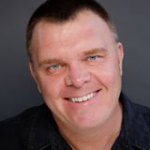
The 4K Fuji X-T2 is here
Hanriverprod reacted to Mark Holmes for a topic
Another test with the X-T2. 4K, Acros simulation. I like the look the black and white gave our scene.1 point -
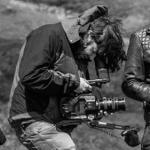
GH5 Prototype
zetty reacted to Oliver Daniel for a topic
Yes a lot of us shoot handheld. If I'm not using a gimbal or slider for special movement, its handheld all the way. Budgets for work are crashing down because technology is so accessible, and handheld not only saves a lot of time lugging around support gear, it also heightens creativity as you can get the shoot you want easier, anywhere, at all sorts of angles. Either the Olympus or the GH5 will be the one for me, where fast, low footprint, high quality handheld work is needed. We'll see how they stack up.......1 point -
Handheld videography is underrated. If Panasonic can reach the 6.5 stops of stabilisation of Olympus, I think it would be as smooth as a steadycam. Development like this is Far Greater for lower budget indies, and Guerilla Shooting. For large productions stabilisation, ISO and zooms have no place. Too much time and money is spent on things which can be handled otherwise. And FX Artists and Companies are underpaid.1 point
-

GH5 Prototype
zetty reacted to Andrew Reid for a topic
I'm going to have to defend the DSLR and mirrorless cameras big time... ENG shoulder shooting is overrated. I personally don't want to lug around a big heavy camera with rails and a shoulder mount that can only be shot with in one position at one height. At least with a DSLR you have a choice whether you rig it up for ENG style shooting or something more minimal. When you have 5 axis stabilisation and a body that weighs less than 1kg, it really isn't that hard Indeed when you have an EVF (either built in or via loupe) you basically have the same shooting style as a Super 16mm camera and nobody is suggesting those aren't suitable for film work. Times change. The 18MP refers to 6000 x 3000 in 6K Photo Mode (the maths is 6000 * 3000 = 18 million pixels) If the final sensor is in that aspect ratio I will eat my hat There's no way it is going to be 18MP. It will be in region of 24-28MP if it supports 6K res1 point -
I completely fail to see this. A GH4 is vastly preferable to use than a Canon DSLR. Strongly suspect that the massive majority of preferences for Canon's so called "ergonomics" is just to the *huge* number of ex (or current) Canon shooters, thus saying "ergonomics" is just a code word for "familiar". There is nothing truly great about Canon's DSLR ergonomics for filming with, it is just "what we are used to" (personally I'd rather take a Nikon for stills!).1 point
-

Canon 6D vs 5D MkIII vs 7D MkII for filming with EOSHD C-Log
benymypony reacted to IronFilm for a topic
If you're going to buy a Canon DSLR and **not** use Magic Lantern then you're really throwing your money away. One of the few rare good reasons to consider a Canon DSLR for filmmaking is because of Magic Lantern.1 point -
Black magic unveils new camera
Ricardo Constantino reacted to enny for a topic
1 point -
Black magic unveils new camera
Ricardo Constantino reacted to tweak for a topic
We all laugh but it still arguably shoots a better movie than consumer dslrs...1 point -
Thanks Marco, but it has only one SPI? I think this project needs two off the top of my head. Also my friend already has owns a Nano, which is why we went for it for now. Finally, the Bluering code is written on the Nano and gives us a slight head start.1 point
-
Please, whoever is at Photokina talking to panasonic reps: we desperately need (usable) cropmarks on the GH5. Camera has been out for 2.5 Years now and I'm still duct taping my display. Cropmarks for 2.35, 2.66 (with black/dark borders, not just lines), preferrably ability to upload custom cropmark images, Anamorphic desqueeze for 1.33, 1.5 and 2x, focus assist zoom during recording. Unfortunately Panasonic reps didn't pay any attention to a very detailed and easy update-list from the GH4 groups.1 point
-
Canon XC15
webrunner5 reacted to Dave Del Real for a topic
I think that may be for a C100 type shoe connector with XLR ports.1 point -
Canon XC10 versus Sony RX10 III. The Canon is underrated!
Lintelfilm reacted to tomsemiterrific for a topic
Canon maps C-Log at 32% IRE for 18% gray. When I shoot that way I get noise in the darker parts of my footage--makes me a little crazy. So, generally, I try to shoot at 40% IRE for 18%, and top out at 75 or 80% for 90% white and I get much less noise in the darker areas and still preserve my highlights pretty well. People have different ideas about this, but there is a general consensus about not starving Canon sensors regarding light. I know Shane Hurlbut shoots Canon Log at higher IREs than Canon recommends and likes the results. For a long time I was confused about how to best expose C-Log--mainly because I had such a horrible time making Sony S-Log look like anything decent. But Canon C-Log is much easier to grade and, though I'm sure I'll get a lot of disagreement on this, I think C-Log is pretty flexible regarding exposure. Just don't blow out your highs (keep them below 80 IRE and you'll probably be fine. I do a lot of shooting in TV mode, especially out of doors or where I have little or no control of the surroundings. Rather than adjusting exposure compensation I leave it where I would normally shoot non-Log gammas. I find this footage grades well, preserves the highs adequately, yields low noise in the blacks, and works great with C-log 3 709 LUTs you get from Canon for their C300 Mk II. In contrast, when I adjust exposure compensation to yield 18% gray at 32 IRE (or thereabouts) I get noise in the darker areas of the image. You may find you don't like the results, but they can't shoot you for trying. PS As an afterthought consider the sensors of the C100 Mk II and C300 Mk II are large and better, pound for pound, regarding low-light. So exposing Log 18% gray at 32 IRE yields a reasonably clean image in low light most of the time. So, it seems to me the XC10 with its smaller sensor might require exposing the image at higher IREs than the C300 mk II to yield similar results. Is this reasonable thinking--or what?1 point -

For those in love with the FULL FRAME look which system gets closest in 4K?
Don Kotlos reacted to DBounce for a topic
Seems most here are convinced that FF on the A7Rii is garbage. Yet I thought the difference in iq was marginal when compared to the aps-c mode. So much so that it was my preferred shooting mode 90% of the time.1 point -
Crop Factor is the ratio of diagonals for the optical image circles. Width ratio and/or area ratios are meaningless as they don't relate to the actual optical imaging circles, especially when using the correct Crop Factor for matching cameras and lenses for specific shots and DOF via Equivalence math. Right now an A7S II or A7R II (much better AF) along with a Canon 5D III could work really well. Use the 5D III to shoot raw stills of the scenes. Then in post color match the stills to the A7x II footage. I've done this by eye and it's not that hard: with the 1DX II and C300 II to the A7S II: Note that no one could tell which camera was which for sure until I gave the answers. It might also be possible to create a 3D LUT for A7x II to Canon, however shooting reference raw stills will probably work better.1 point
-
Canon XC15
webrunner5 reacted to Flynn for a topic
If Canon is able to put a 24-100mm equivalent f1.8-2.8 in the G7x which is tiny compared to the XC10, surely they can provide an even better lens with a similar focal length for the XC15. I know the slow lens tended to be the first thing most people complained about.1 point -
So, I had my first go with the GX85... awesome little camera... well worth what I paid for it. I have to adjust Saturation a little. On my monitor, the levels look fine, but when I watch it on one of my TVs, it is definitely over-saturated. I am going to try lowering my in camera saturation a tick or two. For this video, the in camera settings were... Contrast -5, Sharpness -5, Noise Reduction -5, Saturation -2. I'm going to try -3 and -5 next. I used FilmConvert for correction/grading. And the music is by Kevin McLeod.1 point
-

Canon XC10 versus Sony RX10 III. The Canon is underrated!
AaronChicago reacted to jpfilmz for a topic
I've just finished filming a short film. We used 5D Raw, A7s + speed booster, GH4 + speed booster, and the XC10. The best looking and "organic moving" footage in my opinion came from the 5D Raw and the xc10 in 4k. The a7s was the 3rd best and the gh4 was the sharpest "out of camera". We could have comfortably shot the whole thing on the XC10. Unsharpened ungraded CLOG frame grabs. Having a 1 inch sensor is no hindrance for a shooter like me...i own multiple cameras and i light my shoots. I'm invested in canon gear, it uses the same batteries as the 5D3, has good battery run time, doesn't overheat and captures excellent video quality that compliments 5D Raw. I don't have to carry around a 25lb camera bag with various lenses and accessories to be able to shoot dynamically with the xc10. The only accessory I carry is a variable nd filter. I like to minize rigging as much as possible and I don't want an xlr input on this form factor, a rode videomic pro is good enough. The only thing i would like is a constant f/2.8 and true DPAF. I wouldn't even bother with a C100-300 if it had those 2 features. More ungraded frames of CLOG + Variable ND filter of me testing the cam on a poor trapped dog.1 point

